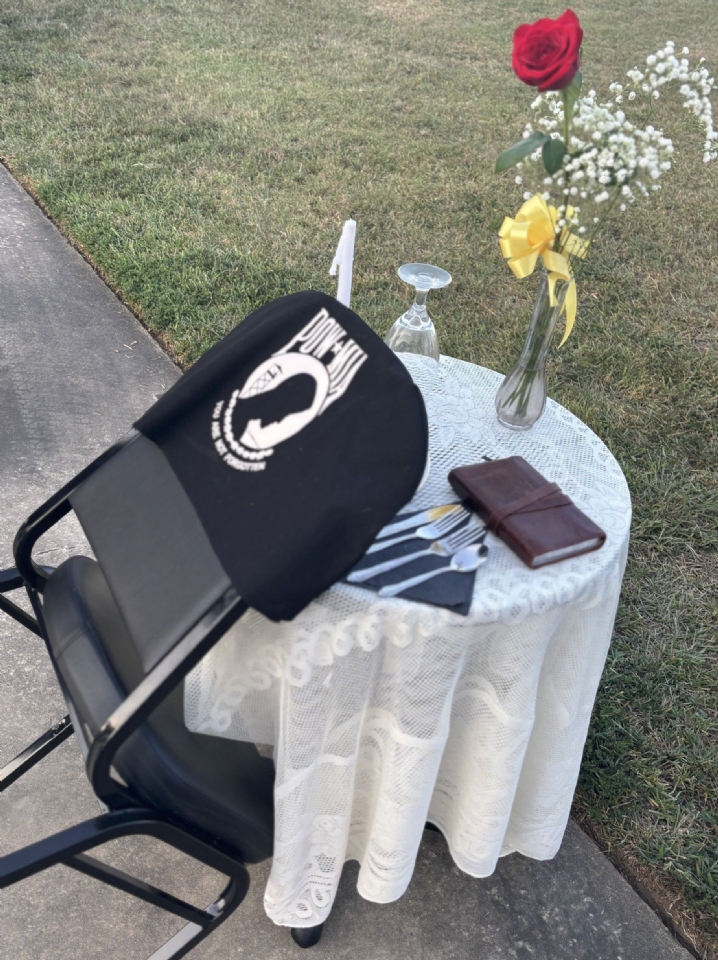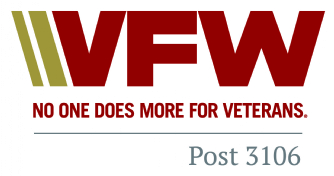All those who fought and served their country when they received
the call, were men and women of courage, judgment, integrity and
dedication. Where does dedication end? You can never put an end to
dedication. After all, those who remain Prisoners of War or are still
Missing in Action are still serving with never ending dedication. For
them, it can never be over. For us, we can never let their sacrifices,
or them, be forgotten.
National POW/MIA Recognition Day
Since the American Revolution, people fighting to secure the freedom of the United States have
at some points in time been held as prisoners of war (POWs).
But it took more than 200 years for our country to officially recognize the sacrifices made by
those Americans who spent time in enemy hands or who were declared missing in action (MIA)
from U.S.-involved conflicts around the globe.
National POW/MIA Recognition Day was established in 1979 through a proclamation signed by
President Jimmy Carter. Since then, each subsequent president has issued an annual
proclamation commemorating the third Friday in September as National POW/MIA Recognition
Day. In 1997, President Bill Clinton further strengthened the importance of the day by officially
designated it as one of the six days per year that the POW/MIA flag is required to be flown at
designated federal government locations.
A national-level ceremony is held on every National POW/MIA Recognition Day. Traditionally
held at the Pentagon, it features members from each branch of military service and participation
from high-ranking officials.
In addition to the national-level ceremony, observances of National POW/MIA Recognition Day
are held across the country on military installations, ships at sea, state capitols, schools and
veterans' facilities.
No matter where they are held, these National POW/MIA Recognition Day ceremonies share the
common purpose of honoring those who were held captive and returned, as well as those who
remain missing.
Please join us every year on the third Friday of September for our ceremony held at the Vernon Parish Veterans Plaza, or at VFW Post 3106 in the event of inclement weather.
 The POW/MIA or "Missing Man” Table
The POW/MIA or "Missing Man” Table The POW/MIA Missing Man Table ceremony is a dignified and solemn moment in many formal
dinners and other occasions.
There have been many different narratives written for the ceremony, but the symbolism is quite
constant.
It involves a table, usually set off to the side, with a single chair.
The table is set with a white tablecloth, a single candle, a book of faith, an inverted
glass, and a single red rose in a vase, around which is tied a yellow ribbon.
Set at the table is a plate containing a slice of lemon and a small amount of salt.
There is nothing more poignant than witnessing the empty chair sitting at a POW/MIA table with
incredible significance for every displayed feature of this ritual.
Witnessing the ceremony that accompanies this memorable event brings more than just a single
emotion.
The ceremony is performed many times, throughout the year, at official military events in
remembrance and in honor of all POW/MIAs.
POW/MIA Flag History
The official U.S. POW/MIA flag resulted from the efforts of family members to display a
suitable symbol that made the public aware of their loved ones who were being held prisoner or
declared missing during the Vietnam War.
In 1970, Mrs. Michael Hoff, the wife of a service member declared MIA and a member of the
National League of POW/MIA Families, recognized the need for a symbol honoring.
POW/MIAs. Prompted by an article in a Florida newspaper, Mrs. Hoff contacted Norman
Rivkees, Vice President of Annin & Company. The article stated that the company had made a
banner for the newest member of the United Nations, the People’s Republic of China (PRC), as
part of their policy to provide flags of all United Nations member states. Mrs. Hoff found Mr.
Rivkees very sympathetic to the POW/MIA issue. He and an Annin advertising agency
employee, Newt Heisley, designed a flag to represent our missing men.
In January, 1972, the League of Families Board of Directors approved the design of the flag and
ordered some for distribution. Wanting the widest possible dissemination and use of this symbol
to advocate for improved treatment for and answers on American POW/MIAs, no trade mark or
copyright was sought. As a result, widespread use of the League’s POW/MIA flag is not
restricted legally.
The flag was flown over the White House for the first time in September, 1982, making it the
only flag other than the U.S. flag to be displayed there.
On March 9, 1989, an official League flag – flown over the White House on National POW/MIA
Recognition Day 1988 – was installed in the US Capitol Rotunda as a result of legislation passed
overwhelmingly during the 100th Congress.
On August 10, 1990, the 101st Congress passed US Public Law 101-355, which recognized the
League’s POW/MIA flag and designated it "the symbol of our Nation’s concern and
commitment to resolving as fully as possible the fates of Americans still prisoner, missing and
unaccounted for in Southeast Asia, thus ending the uncertainty for their families and the
Nation.”
The 105th Congress passed Section 1082 of the 1998 Defense Authorization Act requiring that
the POW/MIA flag fly six days each year over specific federal locations.
Those required days are:
- Armed Forces Day, May 16
- Memorial Day, May 25
- Flag Day, June 14 Independence Day, July 4
- POW/MIA Day, 3rd Friday of September
- Veterans Day, November 11
The required federal locations include:
- All major military installations
- National cemeteries
- All post offices
- Veterans Administration medical facilities
- The World War II Memorial
- The Korean War Veterans Memorial
- The Vietnam Veterans Memorial
- The official offices of the secretaries of state, defense and veterans affairs and the director of the selective service system
- The White House
Most state and local governments across the nation have adopted similar laws.
Display Rules
When displayed from a single flag pole, the POW/MIA flag should fly directly below, and be no
larger than, the United States flag.
If on separate poles, the U.S. flag should always be placed to the right of other flags. On the six
national observances for which Congress has ordered display of the POW/ MIA flag, it is
generally flown immediately below or adjacent to the United States flag as second in order of
precedence.







FOLLOW US